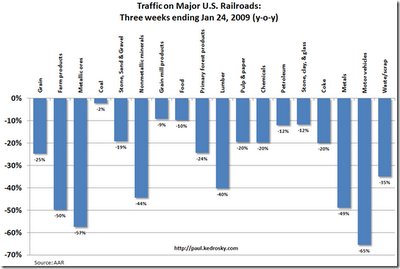The Latin American nation now runs one of the most orthodox monetary and fiscal policies in the world, and its highly capable central bank and fiscally disciplined government have maintained fiscal and trade surpluses during the entire episode of global synchronic growth and high commodity prices. The very high level of real interest rates avoided overheating the economy and creating an over-expansion of credit, which today would have ended terribly.
The decades-long policy of weaning itself off of imported oil by starting its own ethanol program and focusing on deep-sea drilling have helped Brazil achieve a remarkable level of self-sufficiency in the energy sector. And that self-sufficiency really paid off when oil had its massive spike up to $150 per barrel last year: The country’s savings made it a net creditor of the world.
So, Brazil – unlike the United States, England and much of Europe – was not over-levered. It was well positioned fiscally, and from an oil dependency standpoint, well equipped to face the dramatic events of last year.
As a result, the market has valued Brazil’s consistently prudent policies highly. In the four days after my October 27 recommendation, the MSCI Brazil Index fund shot up 31% as investors realized how cheap high quality Brazilian equities were trading and forced liquidation abated.
The ETF dropped back on some profit taking, but since mid-November, has brutally outperformed the S&P 500 by 37%.
PBR - One of Brazil's best stock
razil’s policy of energy self-sufficiency achieved a resounding victory last year. But there is much more ahead: Brazil is on its way to becoming a major oil exporter. And we are going to profit from it greatly.
Not only is oil going to rise strongly as soon as the major adrenaline shots of fiscal stimuli and massive monetary easing kick in around the world, but Brazil’s production is set to grow exponentially. This double benefit which led President Luiz Inácio “Lula” da Silva to proclaim that God had given Brazil a second chance, will create billions and billions of dollars for Brazil through Petrobras, its leading energy company.
Even with such an incredibly evident upside, there is always a catch to any bullish story. And in this case, some analysts believe that Brazil might resort to taxation or some other arrangement to minimize the upside for Petrobras shareholders and move that upside squarely into government hands.
Others point to the huge costs of developing these extremely deep properties, the difficulty in transporting the oil back to land, the length of time involved in developing these fields, and even the difficulty of obtaining financing now that oil has sold off from $150 down to about $50 per barrel.
Of course, I resoundingly disagree with all these objections. And here’s why:
The Brazilian government, unlike those of Venezuela and Bolivia, has a long track record of welcoming foreign multinationals and individual investors and treating them fairly.
Also, Brazil has been at the forefront of deep sea drilling for years. For example, it has a 25% stake in the biggest U.S. oil find in decades: the Jack II in the Gulf of Mexico. And Petrobras actually anticipated the rush for oil by locking in long term contracts for every major deep sea drill rig that they could get their hands on ahead of the market.
Sure, it faces new challenges, but Petrobras – from ethanol to deep sea drilling – has proven savvy with its timing and consistent with its execution.
Finally, as I had anticipated back in October, projects of huge strategic and financial significance will be a breeze to finance, even in very difficult market conditions. Indeed, China which has been wisely using this crisis to cherry-pick access to commodities around the world, recently reached an agreement with Petrobras, in which China Development Bank will provide Petrobras $10 billion in financing in return for a long-term supply of oil.
We simply cannot pass on Petrobras, with the company ahead of a recovery in activity in the global economy and a devaluation of the dollar.
Petrobras rose 1.83% Friday to close at $35.17 a share. The stock is up more than 43% year-to-date.
